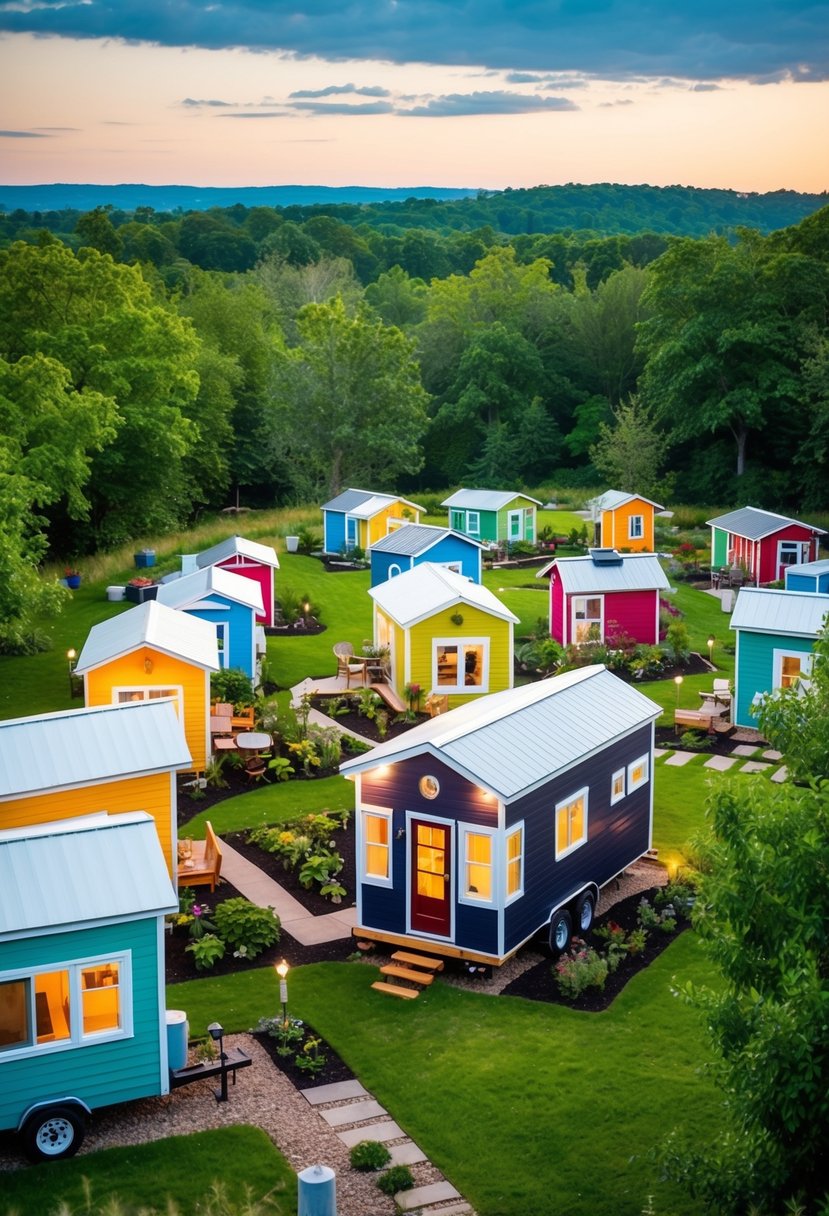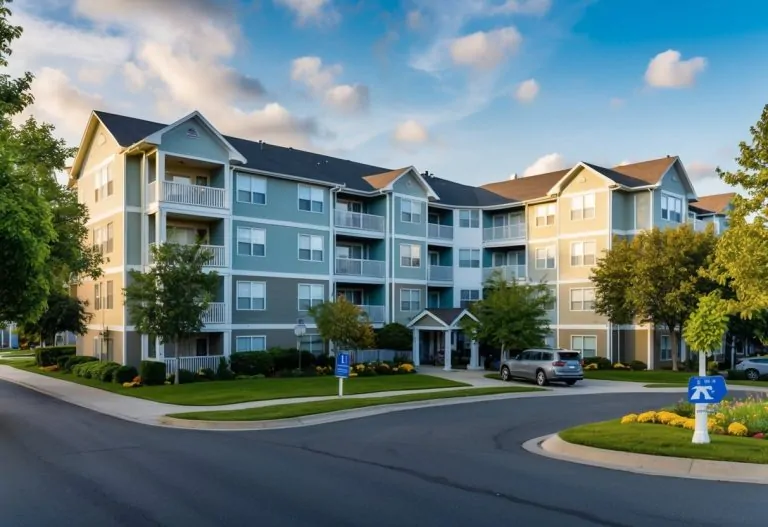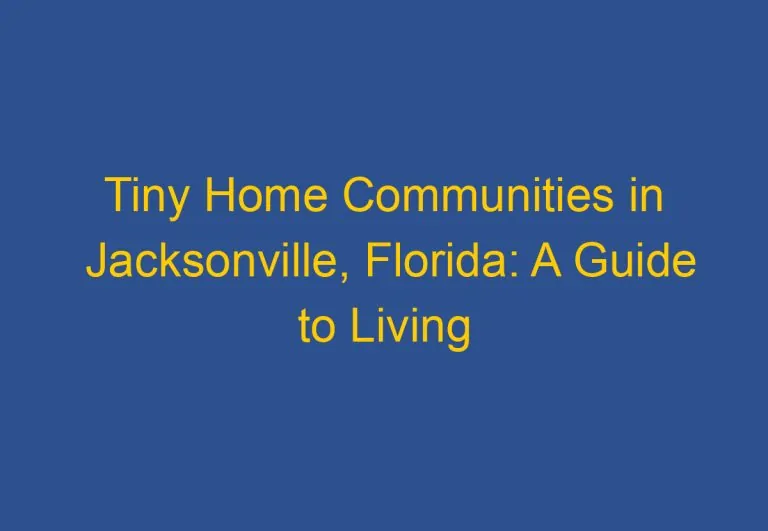Permanent Tiny Home Communities: Sustainable Living Solutions for Modern Life
Permanent tiny home communities are becoming increasingly popular for those seeking a simpler, more sustainable way of life. These communities offer an attractive alternative to traditional housing, blending affordability with a sense of belonging. Many people find that living in a tiny home community not only reduces their living expenses but also fosters a stronger sense of community and connection with their neighbors.

In these communities, residents often enjoy shared amenities, including parks, gardens, and social spaces, which contribute to a supportive environment. With a wide range of options across the country, individuals can find communities that align with their values and lifestyle interests. From eco-friendly designs to family-oriented developments, there’s a permanent tiny home community for nearly everyone.
Exploring these unique living arrangements can provide insights into a new way of thinking about homes and neighborhoods. Readers will discover various communities, what they offer, and how they can transform lives.
Permanent Tiny Home Communities

Permanent tiny home communities are designed for long-term living. These communities feature houses built on foundations, offering stability and a sense of belonging.
Benefits of Permanent Tiny House Communities:
- Affordability: Homes are often more cost-effective than traditional housing.
- Sustainability: Many communities promote eco-friendly living.
- Shared Resources: Residents can share tools and skills.
Tiny home villages can include a variety of designs. They provide space for personal gardens and outdoor areas. For instance, the Circle Pond Tiny Home Community is known for its supportive environment.
In these setups, individual tiny houses often range from 300 to 600 square feet. This size allows for efficient living while maintaining comfort. A tiny house block may also have communal areas for gatherings.
Many tiny house communities focus on creating a close-knit atmosphere. Residents often bond over shared experiences. This camaraderie enhances the living experience.
Some communities, like Escalante Village, are located in beautiful natural settings. Such locations attract those who want outdoor access along with community support.
Overall, permanent tiny home communities are an ideal choice for those seeking a simpler lifestyle with a strong sense of community.
Where I Can Find Permanent Tiny Home Communities?

Finding permanent tiny home communities can be exciting for those interested in miniaturist living. Many options exist across the United States.
- Tiny Home Villages
Communities like Escalante Village in Colorado feature homes on permanent foundations. These villages often offer amenities like gardens and shared spaces. - Tiny House Communities
Websites dedicated to the tiny house movement can help locate communities. Many communities now cater to tiny homes on wheels, providing spots for parking and living full-time. - RV Parks
Some RV parks have started allowing permanent tiny homes. These parks provide infrastructure like water, sewer, and electric hookups, making them more livable. - Online Listings
Websites like Tiny Living and The Wayward Home include listings for tiny home lots and communities where residents can find permanent options. They often share detailed descriptions and features. - Local Regulations
It’s important to check local zoning laws and regulations. Some areas may have specific rules regarding tiny homes on wheels or permanent tiny homes.
By exploring these options, individuals interested in tiny homes can find a community that fits their lifestyle and needs.
How I Can Live In Permanent Tiny Home Communities?

Living in a permanent tiny home community offers a unique lifestyle. He or she can enjoy simplicity and a sense of community.
Steps to Consider:
- Research Communities: Explore various tiny home communities that allow permanent living. Look for amenities, location, and regulations.
- Choose the Right Type: Decide between a tiny home on wheels or a traditional tiny house on a foundation. Each has benefits and regulations to consider.
- Prepare for Permits: Understand local zoning laws. Some areas have specific rules for tiny homes and might require permits for permanent residency.
- Join a Like-Minded Community: A tiny home community often attracts individuals who share similar values, such as environmental sustainability and minimalism. This can enhance social connections.
- Plan for Utilities: Check how utilities are managed. Many communities provide hook-ups for water, electricity, and sewage, but he or she may need to set up these services.
- Consider Financial Aspects: Monthly costs may include rent for the land and utility fees. It’s essential to budget accordingly.
Benefits of Living in Tiny Home Communities:
- Connection to nature
- Lower living costs
- Supportive neighbors
By following these steps, she or he can successfully live in a permanent tiny home community, enjoying a fulfilling lifestyle.
Benefits of Permanent Tiny Home Communities

Permanent tiny home communities offer a range of advantages for those interested in minimalist living. Here are some key benefits:
- Affordability: Living in a tiny home significantly reduces housing costs. This makes it a viable downsized alternative for many people.
- Sustainability: These communities often focus on eco-friendly practices. Many tiny homes use fewer resources and generate less waste.
- Shared Resources: Residents typically have access to communal facilities. This can include gardens, tool sheds, and community centers, fostering a sense of belonging.
- Connection to Nature: Many tiny home communities are located in natural settings. Being surrounded by greenery promotes a healthier lifestyle.
- Minimalist Lifestyle: Living in a smaller space encourages minimalism. This can lead to a simpler, more organized life.
- Community Support: Residents often form strong bonds with neighbors. This support system enhances well-being and reduces feelings of isolation.
- Eco-Village Concepts: Some tiny home communities embrace an eco-village approach, emphasizing sustainable living practices. This encourages residents to live in harmony with their environment.
Tiny home communities cater to those seeking a more sustainable, connected, and simplified lifestyle. They represent a growing trend that is changing how people think about housing.
5 Best Permanent Tiny Home Communities in the USA

- LuxTiny, Arizona
Located in the scenic White Mountains, this community emphasizes a luxurious yet manageable lifestyle. Residents enjoy a beautiful property with spacious lot sizes and a community garden. - Lake Walk, Georgia
This community offers a mix of permanent and temporary tiny homes. It’s designed for those who seek sustainability and cost savings while living close to nature. - Park Delta Bay, California
Visitors and residents can choose from tiny homes on wheels and permanent structures. This community provides a balanced environment for miniaturist living. - Tiny House Block, California
Situated in Mount Laguna, this location allows residents to park their tiny homes with essential utilities included. It is also close to walking trails for outdoor enthusiasts. - Sunset Beach, Florida
This unique community offers a permanent living option for tiny house lovers. It combines the charm of tiny homes with the beauty of beachside living, catering to a relaxed lifestyle.
These communities are at the forefront of the tiny house movement, providing diverse options for those interested in tiny homes and rv parks. They showcase the benefits of living simply and sustainably.
Amenities and Lifestyle Permanent In Tiny Home Communities

Permanent tiny home communities offer a unique lifestyle with various amenities that enhance daily living. Many of these communities feature community gardens where residents can grow their vegetables and flowers, promoting a sense of collaboration and sustainability.
Pet lovers will appreciate having a dog park on-site. This space allows pets to play freely, socialize, and exercise, making it a great place for community bonding.
For those who enjoy the outdoors, there are often nature trails accessible from the community. These trails invite residents to explore their surroundings while enjoying exercise and fresh air.
Communities also provide spaces for outdoor activities. This may include picnic areas where families can gather, or workout zones for exercise enthusiasts.
Fitness is important, so many communities have a fitness center that offers equipment for residents to stay active. This facility often becomes a social hub, where neighbors can connect while working out.
Convenience plays a big role in lifestyle. Many communities offer shared laundry facilities that save time and space within individual homes.
Together, these amenities create an engaging environment. They encourage residents to take part in community activities and foster connections among neighbors.
Zoning, Regulation, and Homeownership OF Permanent Tiny Home Communities

Zoning rules play a critical role in establishing permanent tiny home communities. Such regulations determine where these homes can be placed and whether they qualify as permanent residences.
Each state has different zoning laws. For instance, many areas need to be zoned specifically for residential use. This ensures that tiny homes meet the necessary requirements for safety and livability.
Homeownership in these communities can vary. In some cases, residents might own their tiny homes but rent the land. In other cases, both the home and land could be owned together.
Community First! Village in Texas is a notable example. This village provides durable tiny homes for the homeless, fostering a supportive community environment. Here, residents are encouraged to thrive through shared resources and connections.
Many people are drawn to the tiny house lifestyle for its simplicity and affordability. Living in a tiny home often leads to lower financial burdens, allowing residents to focus on their quality of life.
Navigating zoning and regulatory hurdles can be complex. Those interested in joining a permanent tiny home community should research local laws. Connecting with existing communities and advocacy groups can provide valuable insights and support.
Locations and Environments

Permanent tiny home communities can be found in diverse settings, allowing residents to choose their ideal surroundings. Many of these communities are located in urban areas, offering convenience and easy access to city amenities.
In contrast, others are nestled in scenic locations, such as those with breathtaking mountain views or near serene lakes. For example, communities in the Rocky Mountains provide a stunning backdrop for nature lovers, while lakeside communities often offer activities like fly fishing.
In Spur, Texas, residents enjoy a unique environment with a small-town feel. This area is known for its friendly atmosphere and affordable housing in tiny home setups.
Communities designed around natural beauty promote outdoor activities and foster connections among residents. Living in such environments supports a lifestyle centered on community and nature, making them appealing to those seeking simplicity in life.
Whether one prefers the buzz of urban living or the tranquility of nature, permanent tiny home communities cater to various lifestyles, providing options for everyone.






